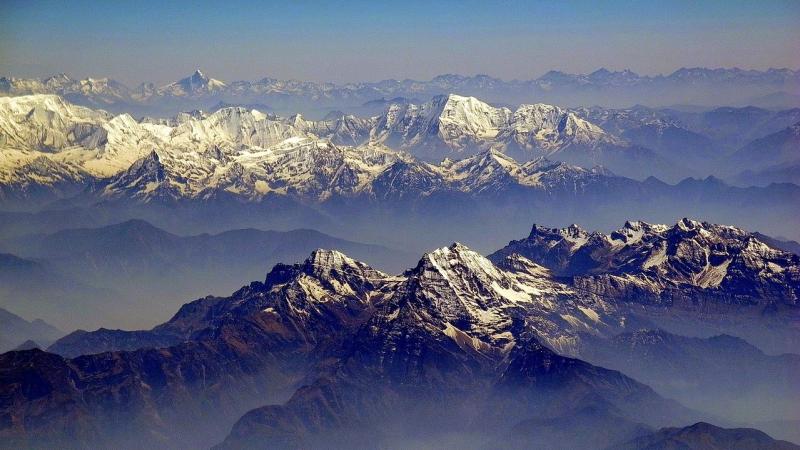
The outermost shell of the Earth, called the lithosphere, is divided into seven major plates. About 50 million years ago, the peninsular Indian landmass drifted northward and collided with the Eurasian plate, resulting in the formation of the majestic Himalayan mountain range. In a recent study, researchers from the Novosibirsk State University, Russia, ETH Zurich, Switzerland, Institute of Seismological Research, India, and King Saud University, Saudi Arabia, have proposed a new collision zone in central India, where a new mountain chain could grow in the near geological future.
Subduction is a geological process that occurs in collision zones of two plates where the thinner one sinks below the thicker one. This process results in earthquakes and the creation of mountains, usually seen at the boundaries of these plates. However, unusual seismic activity, like the Bhuj earthquake that occurred in 2001 in Gujarat and killed about 20,000 people, has been observed inside the continental Indian plate far from any lithospheric boundaries. Other recent earthquakes in Killari, Bhadrachalam, Mt. Abu and Ongole, which are away from the Indo-Gangetic plains, add evidence to this.
In the current study, published in the journal Scientific Reports, the researchers have proposed that the most likely new collision zone in peninsular India is the Narmada-Son lineament. This geological structure is approximately 1000 km long and 50 km wide and runs through the Indian Peninsula from Gujarat in the west to the east Indian state of Jharkhand. Geological data indicate that the lineament coincides with a fracture in the crust that was active about a billion years ago. Empirical evidence suggests that ancient fracture zones like this are vulnerable to deformations in the earth’s crust. The researchers of this study conducted extensive geological tests to validate the hypothesis that the Narmada-Son lineament could mark the origin of a new subduction zone.
The results of the study show that the thickness of lithosphere on the southern side of the lineament is around 80-100 km, while it is 120-200 km on the north.
“The Narmada-Son lineament is located right at the limit between thick and thinner lithosphere. Numerical simulations indicate that such step-shaped structures are good candidates for collision zones”, says Prof Ivan Koulakov of Trofimuk Institute of Petroleum Geology and Geophysics, Russia, and the lead author of the current study.
In the western and eastern sides of the lineament, there are traces of massive deposits of basalt rocks in the region, caused by plumes of molten magma, that weakened the lithosphere by burning holes in it that also facilitate creating the huge fracture throughout the Indian continent.
Existing satellite data also show significant deformations in the crust of continental India around the Narmada-Son lineament. A four-year measurement, for example, at two GPS (Global Positioning System) stations at Barwani in Madhya Pradesh and Sagbara in Maharashtra indicate that the crust is shortened at a rate of three millimetres per year (mm/year). Although this rate pales in comparison to the 50 mm/year movement of the Indian landmass into the Eurasian plate, the fact that it occurs in a solid plate is geologically significant. The researchers say that detailed measurements of the ground deformation using a denser GPS network may provide more accurate estimates for contractions at the lineament.
The researchers have extrapolated the future behaviour of the lithosphere in this region using numerical simulations. They show that in a few million years, high mountains will grow up along the Narmada-Son lineament that will separate North India from the southern part.
“Some non-active zones along the Narmada-Son lineament might appear to be the place of a next strong earthquake. This should be taken into account when considering construction security standards”, warns Prof. Koulakov.
The panoramic view of the majestic mountain ranges, like the Himalayas, is indeed breathtaking. But, the process of their formation is equally terrifying with earthquakes that cause enormous devastation. This study yields information that can help us take precautionary measures to safeguard many lives that could be affected in this region, in the near geological future.





